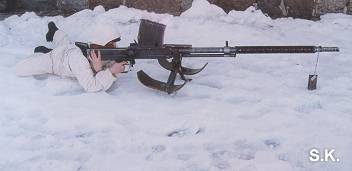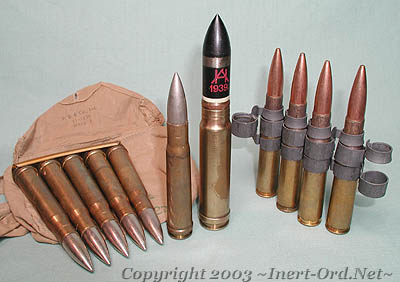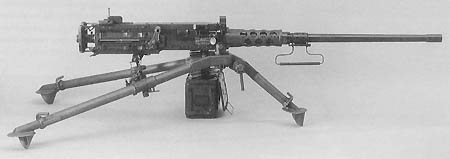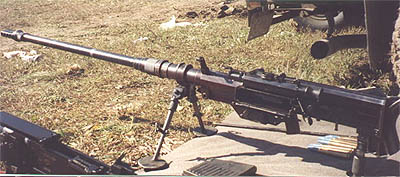|
|
|
Swiss Solothurn, S-18/100 20mm Anti-Tank Cannon
(Manufactured for export and adopted by Italy, Hungary, and Switzerland.)
|
Finnish, L-39 Lahti 20mm Anti-Tank Cannon
|
|
|

|
|
System of operation: Recoil, semi-automatic, rotating bolt
Overall Length: 85 in
Barrel: 57 in
Weight: ?
Feed Device: 5 or 10-round box magazine
Muzzle velocity: 762 m/sec
Penetration: 35mm at 300m
|
System of operation: Recoil, semi-automatic
Overall Length: 2 240 mm ( 88.2 in )
Barrel length: 1300 mm ( 51.2 in )
Weight: 49.5 kg ( 109 lbs. )
Feed Device: 10-round box magazine
Muzzle velocity: 800 m/s ( 2624 f.p.s. ) @ 15rpm (30max)
Penetration: 20mm at 300m - 60° (40mm using APCR ammo)
|
|
|
|
Above are two of the largest anti-tank rifles
of their time. Japan also produced a 20mm cannon, the Type 97. Probably
the largest weapon in this class, weighing in at a massive 59kg (130 lbs).
As you can see by the photos these
were pushing the limits of what could be considered a portable infantry weapon.
Even though these guns had superior single shot performance compared to either
the Boys or Browning, their sheer size and weight were a major handicap.
Combined with the fact that tank armor was quickly reaching thickness impenetrable
by even these behemoths, the days of an effective anti-tank rifle were over.
However the Solothurn and Lahti continued to find service roles as long range
light "sniper" artillery.
Here is a couple of interesting sites worth a vist:
Jaeger Platoon
WinterWar
05.06.07
|




